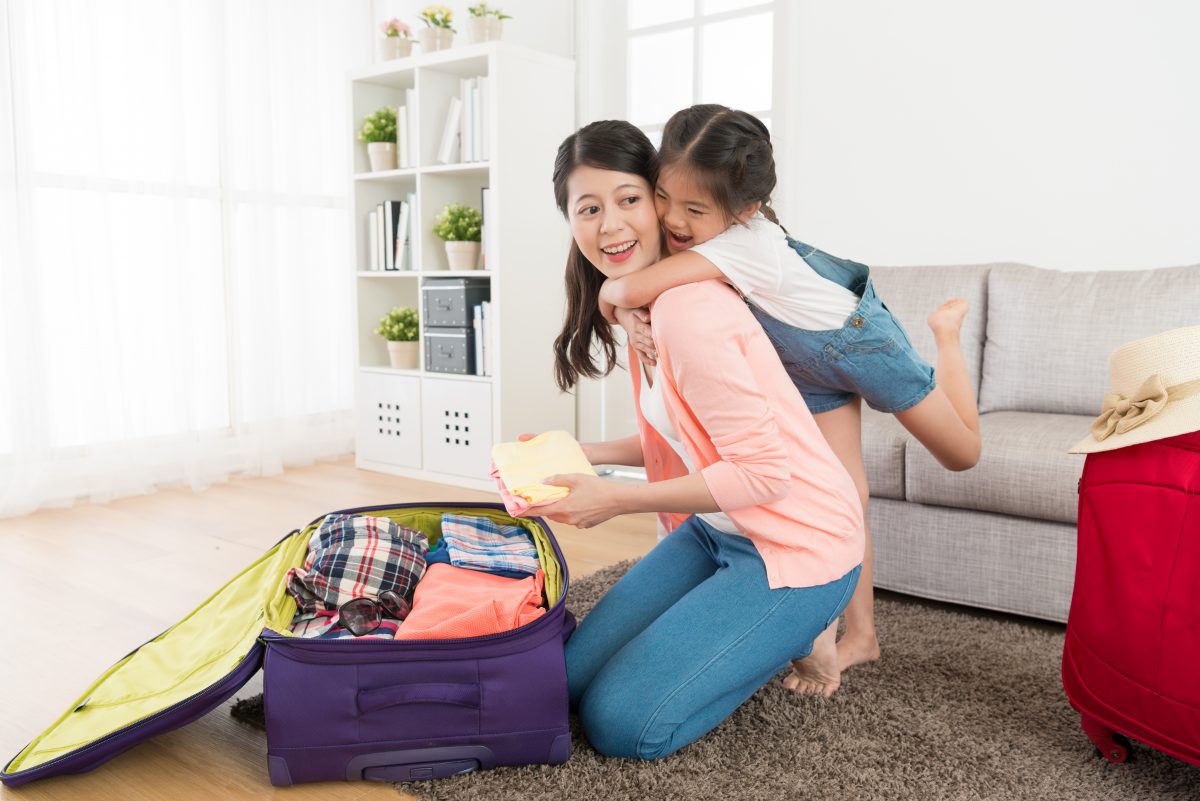Concerns about financial costs and prioritising life goals have led to a decrease in household size in Singapore among couples. Is the expense of raising a child a factor?
The choice to saying no to raising a kid and remaining childless is on the rise, evident in East Asia countries like South Korea, Hong Kong, and Taiwan reporting the lowest fertility in 2020.
There are many reasons why people opt not to have children. Challenges in achieving financial stability or focusing on career growth are common factors influencing this choice. However, the underlying theme in all these reasons is financial concerns. Raising a child is an expensive responsibility globally, with cities like ours posing additional financial hurdles.
What is the true cost of raising a child in Singapore? Explore the detailed breakdown of expenses below.
Related: Ways to Start Investing For Your Children to Give Them a Financial Head-Start
The Initial Cost of Raising a Child: Pregnancy and Healthcare

Spending money on a child begins before birth, as parents need to secure their future baby’s well-being. This includes attending maternity exercise classes to stay fit and adjusting diet for proper nutrients, adding to the standard prenatal doctor visits.
Prenatal care typically costs around S$3,000, covering ultrasound visits, vitamins, harmony testing, and blood tests. The average bill for childbirth varies from S$1,143 to S$7,909 for normal births and from S$2,228 to S$12,261 for C-sections. Usually, the cost of childbirth in a subsidised ward can be balanced out by the MediSave Maternity Package and MediSave limits.
However, couples opting for B1, A, or private hospital wards may end up spending between S$1,500 and S$4,909 out-of-pocket. In some instances, pregnancy complications could lead to additional costs of several thousand dollars, even with coverage from MediShield Life and private insurance.
MediSave Maternity Package
Through the MediSave Maternity Package, you have the flexibility to utilise your MediSave funds for pre-delivery medical costs, delivery expenses, and daily hospital charges.
Each MediSave Maternity Package comes with a specific MediSave withdrawal limit, which varies based on the delivery method (e.g., caesarean or vaginal delivery). If you opt out of claiming pre-delivery expenses, you can still use your MediSave savings for the delivery procedure and daily hospital fees. Remember, each delivery method has its own withdrawal limit.
The table below illustrates the MediSave Medical Package limits by delivery type.
|
Delivery Type |
MediSave Medical Package Limit |
|
Vaginal Delivery |
S$1,650 |
|
Vaginal Delivery (Assisted) |
S$2,150 |
|
Caesarean Section |
S$3,050 |
|
Caesarean Section (with Tubal Ligation) |
S$3,500 |
|
Caesarean Section (Hysterectomy) |
S$4,850 |
|
Additional Hospitalisation Stay |
S$450 per day |
Source: CPF Board, Singapore
Expenses That Incur Once Your Child Is Born
The birth of your child marks the start of a lifetime of ongoing healthcare expenses. Except for any serious conditions or long-term illnesses (which may lead to significant costs for parents over the child’s early years), you’ll need to cover their health insurance premiums and any out-of-pocket medical or dental expenses.
How to reduce your child’s medical costs in Singapore
Thankfully, Integrated Shield Plan premiums are affordable for parents, offering full coverage for their child’s emergency medical needs. Additionally, new parents qualify for a MediSave grant of S$4,000 to cover their child’s MediShield premiums. You can use this grant for outpatient visits and vaccinations.
The cash gifts are paid out in installments every six months for the first six and a half years of the child’s life. This increase in the baby bonus can alleviate the expenses related to having and raising a kid in the early years.
Related: Safe-Haven Investments— What Are They and How Can You Invest in Them?
What are the education costs of raising a kid?

While schools in Singapore aren’t as costly as in some other countries, parents still face significant expenses. The most affordable would likely be primary and secondary education, with Singaporean citizens paying S$13–S$33 monthly for compulsory education. Yet, attending an international school could raise a kid’s education cost to S$17,000–S$48,500 per year. On top of this, enrichment classes can cost up to S$6,000 yearly.
The table below illustrates the expected costs of education for raising a kid in Singapore.
|
Education Expense |
Estimated Cost |
|
Infant Care Programme (Subsidised) |
S$12,224 (full day, 16 months) |
|
Child Care Programme (Subsidised) |
S$16,680 (10 months per year for 3 years) |
|
Primary School Fees (6 years) |
S$780 |
|
Secondary School Fees (4 years) |
S$1,000 |
|
Pre-University (3 years) |
S$990 |
|
University Tuition (Parent and Child split costs 50/50) |
S$18,532 |
|
Enrichment Class (S$1,600 per year for 11 years) |
S$17,650 |
|
Miscellaneous Expenses (haircut, shoes, supplies, etc.) |
S$1,510 |
|
Laptop (2 laptops, starting in secondary school) |
S$2,552 |
|
Secondary School Allowances (Parent and Child split costs 50/50) |
S$11,040 |
|
Total |
S$82,923 |
Subsidies and Schemes for Low-Income Households
Schemes and subsidies are provided to low-income households to significantly reduce education costs. For example, students from Government and Government-aided schools eligible for the MOE Financial Assistance Scheme (FAS) receive free textbooks, school attire, and subsidised lunches. They are also exempt from standard miscellaneous or supplementary fees.
There are also substantial subsidies for tuition fees at select post-secondary education institutions under the Ministry of Education’s Tuition Grant Scheme. Finally, working mothers can benefit from subsidies for infant and child care.
What’s the estimated monthly education costs for studying in Singapore?
Want to know how much it’d cost you monthly for your child’s education fees? Take a look at the table below, courtesy of the Ministry of Education.
|
School Type |
Singapore Citizen |
Permanent Resident |
International Student (ASEAN) |
International Student |
|
Primary |
S$13 |
S$193 |
S$453 |
S$713 |
|
Secondary |
S$25 |
S$340 |
S$740 |
S$1,270 |
|
Pre-University |
S$33 |
S$427 |
S$1,007 |
S$1,627 |
Source: Ministry of Education
Related: What You Need To Know About Protecting Your Child With Maternity Insurance in Singapore
Raising a Kid: The Cost of Travelling With Children

Travelling with kids is fun, but there’s also the cost involved in bringing little people around. Adding a child means more spending on food, flights, and activities. The average Singaporean family spends S$662 per person annually on travel, totalling S$11,912 for a child’s first 18 years. Parents with the capacity to spend around S$7,554 yearly for travel tend to invest nearly S$40,000 on their child’s travel over their childhood!
The table below depicts the average costs of vacation by destination, inclusive of the weekly cost for a person.
|
Destination |
Roundtrip Transport |
Low-end Hotel |
High-end Hotel |
Mid-range Meal |
Cheap Meal |
1 Week Cost per Person |
|
ASEAN |
S$154 |
S$21 |
S$137 |
S$13 |
S$2.39 |
S$389 to S$1,412 |
|
Asia & Oceania |
S$571 |
S$66 |
S$322 |
S$32 |
S$11 |
S$1,251 to S$3,346 |
|
Europe & North America |
S$1,611 |
S$133 |
S$551 |
S$87 |
S$14 |
S$2,813 to S$6,245 |
Source: Valuechampion Singapore
In the era of revenge travel, airfare becomes the biggest expense. Travelling with a toddler is cheaper—flights may offer free seats or discounted rates. However, once your child is over four years old, you’ll need to pay the full airfare for them each time you fly.
For a child’s round-trip transportation to an ASEAN region destination, the cost starts at S$154 per year. But if you’re looking at trips to Europe or North America, the price can be as much as S$1,611 for a round-trip.
Aside from flight costs, you’ll also need to consider other crucial travel essentials like travel insurance.
Household Costs When Raising a Kid
Living in a small flat might work well for singles or couples, but raising a kid often means needing more space. This situation typically forces couples to move to a larger flat to accommodate their growing family, which can be expensive, especially in Singapore. For example, the average resale price of a 4-room flat is about 65% higher than a 3-room flat in Ang Mo Kio, which translates to a S$206,000 difference in cost.
Household items
Whether you choose to stay in your current home or move, you’ll end up spending money on your child’s room, updating it as they grow to suit their age. The cost of furnishing a child’s room changes because kids need different things at different stages. Furniture for a baby might be cheaper than for a 16-year-old, but then babies need things like sensory toys, safety gear, and diapers that a teenager doesn’t. Meanwhile, a teenager might need an expensive laptop, adult-sized furniture, and costlier entertainment options.
The table below breaks down the costs of everyday furniture parents may need to purchase for their kids.
|
Room Furniture for Kids |
Average Cost |
|
Crib or cot |
S$306 |
|
Child’s chair |
S$57 |
|
Standalone storage unit |
S$226 |
|
Toys and crafts (per item on average) |
S$22 |
|
Textiles, per item (bedding, towels, etc.) |
S$20 |
Food and clothing
Raising a kid means parents need to plan their budget for many extra costs. Whatever you need for yourself, you’ll need to get for your child too. We explored these costs by checking the average monthly spending on food and clothing.
For example, adding another person to your family could increase your food expenses by about S$4,193 per year. Over the 18 years your child lives at home, this adds up to nearly S$75,500. Clothes are cheaper, costing about S$9,900 for each additional family member. However, keep in mind that these costs can vary based on your lifestyle.
Some families might need to buy food in bulk, while others already buy enough to feed an additional family member. Also, while some families prefer buying new clothes for their children, others are happy to use hand-me-downs from family and friends.
Related: Best Savings Accounts to Open For Your Child (2023)
Hiring a helper

If both parents are working, you might need to get someone from outside to help look after your child during the day. Getting help from family can be tough, as many older people continue working to support themselves. This means many parents end up hiring help, whether it’s a part-time nanny for a few hours after school or a full-time domestic worker.
Let’s say you hire a part-time babysitter for the four hours between when school ends and when you get home, paying S$25 an hour. That’s about S$2,000 a month. A full-time nanny, who offers more comprehensive care and often has professional training, costs more. Typically, you’d pay around S$2,500 a month, adding up to S$30,000 a year.
The cost of having a full-time domestic helper by your side
Hiring a full-time foreign domestic helper (FDW) costs about S$14,000 for the first year, including one-time fees, and then S$12,500 annually after that. On top of this cost, you’ll also need to support a new household member, almost like another child, including maid insurance. This can add stress and the potential for unexpected expenses, such as if the domestic worker gets sick or has an accident.
What’s The Grand Total for Raising a Kid?
Excluding healthcare, new housing, or extra insurance, raising a child for the first 21 years costs a typical family about S$435,707. Therefore, a family opting not to have a child can save around S$20,747 annually over those 21 years. Despite the government offering a Baby Bonus Scheme of S$11,000 to S$13,000 per child, the total expense still exceeds S$426,000 throughout childhood.
A couple can save money on raising a child by spending wisely. For example, with full government subsidies, help from family during work, and not paying for university tuition, the total cost can drop below S$100,000. However, this estimate might still be low, considering other potential expenses we didn’t account for. Also, by not upgrading their home, a couple can save around S$150,000.
The table below breaks down the grand total of raising a kid into low, medium, and high cost brackets.
|
Expense |
Lower-end Cost |
Average Cost |
High-end Cost |
|
Maternity |
S$3,000 |
S$4,500 |
S$7,909 |
|
Education |
S$23,078 |
S$82,964 |
S$222,857 |
|
Travel (until 18 years) |
S$3,754 |
S$11,912 |
S$39,992 |
|
Outside Help |
S$0 |
S$89,000 |
S$360,000 |
|
Housing |
S$0 |
S$150,000 |
S$150,000 |
|
Food and Clothing |
S$49,552 |
S$97,327 |
S$123,691 |
|
Total Cost |
S$79,384 |
S$435,707 |
S$904,442 |
However, raising a kid brings lots of joy and happiness to a family. Seeing your child grow up, learn new things, and achieve milestones is priceless. Furthermore, studies have shown that children bring purpose and fulfilment to their parents’ lives.
Related: Save for Your Child’s Education with An Endowment Insurance Plan
Methodology
We analysed public data to identify the essential expenses parents must cover for their child’s well-being and happiness. This includes costs for childbirth, education, housing, food, clothing, and travel.
Healthcare
For healthcare costs, we factored in prenatal expenses and the basic cost of delivery. We used a standard S$3,000 for prenatal care but adjusted delivery costs based on whether it was at a subsidised B2 or C ward or a private hospital ward. At KK Women’s and Children’s Hospital, a normal delivery without complications in a B1 ward is about S$1,500. For private hospital deliveries, the average out-of-pocket cost for a normal delivery is roughly S$4,909. Calculating healthcare costs can be complex because of various factors like doctor’s fees, delivery type, potential complications, and whether the family opts for maternity insurance.
Education
For education expenses, we considered the costs of school and university fees, enrichment programs, and infant/childcare services. Our lower estimate assumes the family gets the highest available subsidy for early childcare, the child earns a full scholarship for university, and takes enrichment classes at a local community centre. Meanwhile, our higher estimate assumes a no-expense-spared approach to education, including several private enrichment classes weekly, pursuing a medical degree, and not qualifying for any subsidies (due to higher household income).
Housing and outside help
We calculated housing and outside help costs in a similar way. Our low-end estimate for housing assumes the couple won’t move to a bigger flat. We didn’t include extra costs like interest payments, grants, and loans due to certain limitations. For outside help, like nannies and FDWs, we set the cost to zero at the low end. This is because, in the best financial situation, the couple would rely on their parents’ help while they work. On the high end, we kept costs the same as the median spending. This is because of the assumption applied that the couple already lives together and would only need to cover the additional cost of a bigger home.
Food, travel and clothing
To calculate the cost of raising a child for the first 18 years, we looked at the lowest and highest spending on travel, food, and clothing, based on the spending habits of the bottom and top quintiles of the population. We simplified the calculation by estimating the total expenditure for an average household of 3.4 people, then worked out the yearly spending per person and multiplied it by 18. This method is quite basic and doesn’t fully account for the fact that children usually cost less than adults—they might wear cheaper clothes and share food. Also, we couldn’t consider how families save by buying in bulk or other ways they might reduce costs for each additional child, because of data limitations.
Indirect costs exclusion
Having a child also brings indirect costs, such as higher insurance premiums, the need for additional insurance like life insurance, increased utility bills, and lost wages if one parent decides to stay home to care for the child. These costs are difficult to calculate but important to consider when figuring out if you can afford a child. We didn’t include these in our study because they were beyond our calculation scope.
To prepare for the potential costs of raising a child, you will need solid maternity insurance coverage that will cover regular pregnancy expenses like prenatal and postnatal check-ups, vaccinations, ultrasounds, and normal childbirth, as well as pregnancies resulting from In-Vitro Fertilisation (IVF) or other assisted conception procedures. Check out our roundup of the best maternity insurance plans in the market and get sufficient protection today!
Enquire more and contact us today!
Want to know more about AMTD PolicyPal Group insurance plans?
Cannot find what you are looking for? Please reach out to us at Contact AMTD PolicyPal
Read More:
Best Baby-Friendly Travel Destinations For Family Getaways in 2024
How Can You Protect Your Wealth As You Near Retirement?
Investments 101: How to Give Your Kids a Headstart
Top 3 Home Insurance Plans for Fire, Break-Ins, Smoke, and Water Damage
How to Buy a Car When COEs Are High
This content is for informational purposes only, you should not construe any such information or other material as legal, tax, investment, financial, or other advice. Nothing contained on our Site constitutes a solicitation, recommendation or endorsement by AMTD PolicyPal Group in this or in any other jurisdiction in which such solicitation or offer would be unlawful under the securities laws of such jurisdiction.
This advertisement has not been reviewed by the Monetary Authority of Singapore.
Under AMTD Digital, AMTD PolicyPal Group consists of PolicyPal Pte. Ltd., Baoxianbaobao Pte. Ltd., PolicyPal Tech Pte. Ltd., and ValueChampion.




